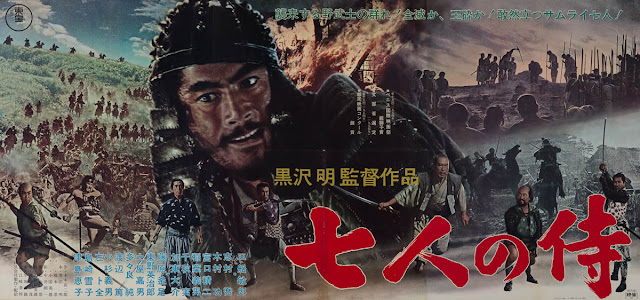Sleepy Hollow (Dir Tim Burton, 1h 40m, 1999)
In 1820, "The Legend of Sleepy Hollow" was published, together with its companion piece, "Rip Van Winkle", written by Irving Washington-these two stories would become two of the first pieces of enduring American literature. A tale of a vengeful headless horseman, an undead Hessian, and the vengeance he wreaks upon a small New York State town, including the superstitious school-teacher Ichabod Crane, it is, due to its Gothic trappings, a Halloween classic, and has been adapted in every format from a Disney cartoon in the 1940s to a four season television series, to miscellaneous albums, and radio adaptions. By far the most memorable version of recent years is Tim Burton's 1999 version, where Crane (Johnny Depp) is a proto-forensic investigator, uncovering the truth behind a series of murders; a typical example of Burton's gothic sensibilities at its best, whilst belying perhaps Burton's most obvious influence, that of Hammer Horror films.
Gothicism is practically synonymous with Burton, and his track record up to this film, with the exception of the overwrought Mars Attacks! are nothing short of impressively gothic fare, from the noirish Batman and Batman Returns, not to mention Edward Scissorhands and Ed Wood, which cemented Burton's connection with his muse for much of the 1990s, Johnny Depp. All of these films are practically textbook gothic, from the gothic romance of Edward Scissorhands, in which a nearly completed artificial man happens across American suburbia, to the gothic comedy, Beetlejuice. The degree to which the director suits the subject matter, however, is nothing short of spectacular, in a beautifully made, heightened gothic work that plays upon everything from the battle between science and faith to the colloquial backwater haunted by the nightmarish Headless Horseman (Christopher Walken).
Beginning with the death of one of the villagers at the hand of the Headless Horseman, a neatly tense scene that practically cements the tone of the film to come, with first his driver and then the genuinely shocking reveal of the Horseman himself, so we are introduced to Depp's Crane, a shy, if determined young man working to bring the scientific method into a barbaric and backward legal system and essentially banished to Sleepy Hollow to solve the crimes, and uncover the mystery behind the deaths. From here, with both an orphaned young man and the magically inclined
Daughter of the chief villager in tow, so Crane begins to uncover the truth, even as the villagers, and the recurring appearances of the Horseman to kill those who attempt to help him, attempt to hide it.
Where the film is as its best is in this growing suspense-multiple scenes play beautifully on the atmosphere, on the fog and the darkness around Sleepy Hollow, of the growing sense of dread, with Elfman's score and the superb sound-design preluding the appearance of the Horseman. But it is in the performances that Burton's gothic sensibilities are best realised, from Depp's gentle fragility, in sharp contrast to the surrounding characters, expanded in flashback in the connection to his mother, to Ricci's archetypal gothic maiden, to Walken's utter scene stealing despite not having a single line in the film. If the film has one flaw, it's arguably in its villain, who finally reveals themselves in the third act, and despite having a genuinely smartly wrought motive, seems ineffective and a surprisingly boring foil to the Horseman.
Where it most notably differs from Burton's fare up to this point is, in particular in its atmosphere, from the cast, largely consisting of British actors, from Michael Gambon, wealthy landowner Baltus Van Tassel and drunken judge Samuel Philipse, (Richard Griffiths), to the setting, where Mexican cinematographer, Emmanuel Lubezki and Burton and his team's design eke out almost outlandishly gothic sensibilities, twisted buildings and trees, not to mention the impressive costume design and makeup that only add to the dreamlike state.
Particularly of note is the use of violence in the film, and it is here that the film skews closest to its obvious influence, that of classic British film studio, Hammer Horror. The violence is often impressively over the top, from the multiple decapitations that are either utterly bloodless, or spatter great torrents of blood over the nearby characters, whilst the fight scenes, particularly when the Headless Horseman himself becomes involved, and the camerawork and colour processing becomes hyper-kinetic, not unlike the work of Zak Snyder's action films.
In hindsight, though, Sleepy Hollow feels like the end of Burton's golden age. Whilst several of the films he made later reach back up to the gothic sensibilities of his late 1980s and 1990s fare, in particular the similarly elaborate and Depp-starring Sweeny Todd, which again evoked the Hammer Horror genre in its retelling of the tale of the Demon Barber, never again would Burton's work be consistently superb, his gothic sensibilities becoming an increasingly self-aware parody of itself, an increasingly tired shorthand for his directorial style. Moreover, the Depp-Burton relationship would never feel as fresh, slowly turning dysfunctional as the actor himself became shorthand for off-beat weirdos and outsiders, culminating in the exorable Dark Shadows.
Sleepy Hollow endures because it is a snapshot of both director and star adapting perhaps one of America's most beloved novels, and putting their all into it. Two decades on, it still remains, overshadowed as it is by many of Burton's earlier works, and some of his later, perhaps the ultimate example of Burton's visual style and Depp's wide-eyed innocent in service to the original gothic tale of Americana.
Rating: Highly Recommended.



Comments
Post a Comment